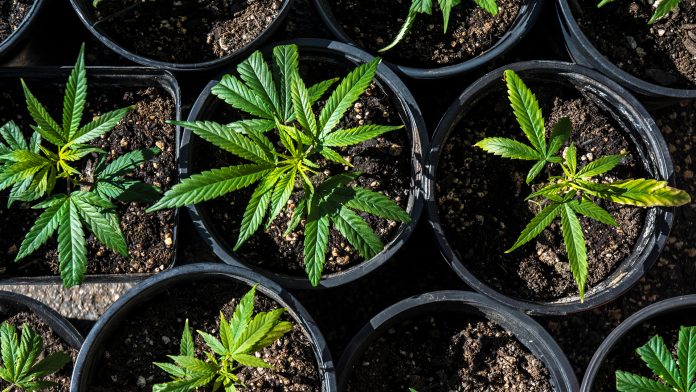
Dr Franjo Grotenhermen, founder and Chairman of the ACM and IACM, provides a deeper insight into medical cannabis delivery systems in Germany, along with patient experience and more.
We spoke to Dr Grotenhermen, the founder and Chairman of the German Association for Cannabis as Medicine (ACM), and founder and Executive Director of the International Association for Cannabinoid Medicines (IACM), who allows us to delve into the world of medical cannabis in Germany. Here we gain a better understanding of how medical cannabis compares to traditional prescription medicine, the dynamics of medical cannabis delivery systems, how effective it has been for patient experience, and the evolving knowledge development regarding medical cannabis research.
How does medical cannabis compare to traditional prescription medicine, both in terms of treatment and side effects?
Essentially, there is no relevant difference. Cannabis is just another option to treat diseases. What makes cannabis, THC and CBD unique is its broad medical potential. You have a typical molecule or medical plant which could treat two, three or four conditions, and with cannabis this could treat 50-100 conditions.
It does not work better for pain than other pain medications, but it may work when other pain medications do not work, the same is true for other possible medical conditions.
What are the benefits and drawbacks of different medical cannabis delivery systems (i.e. different ways of administering the drug)?
The pharmacokinetics are different between oral intake and inhalation. There are some rare studies done with dermal application or rectal application, but this is not the main way of delivery.
Traditionally cannabis was inhaled via smoking which has changed in recent years as people can take this via a vaporiser, and oral intake of cannabis was mainly restricted to THC which has been sold since 1986, and later the THC derivative nabilone was often given orally. However, now taking cannabis orally is becoming increasingly popular. This is not only because there are products available, such as the cannabis extract Sativex, but there are increasing modes of taking oral cannabis, so this has changed in the recent decades from inhalation to oral. Nevertheless, inhalation is still very popular.
The advantage of inhalation is that it is a fast onset form of medication. So, if you are suffering from strong pain then it is useful to inhale medical cannabis for a fast onset for quick effect and quick treatment. However, when inhalation is used as a delivery system, the duration in which the treatment lasts is about 2-3 hours.
With oral intake, it takes about 30 to 90 minutes for the onset of the effects, but effects last longer, which may be a good thing if you have constant chronic pain. To make the treatment more effective in certain cases, it may be beneficial to supplement oral intake with inhalation.
Also, if an individual is suffering from nausea, then it is easier to inhale rather than taking medical cannabis orally, but to have a constant concentration in the bloodstream it may be better to take it orally.
Based on your experience and interaction with patients, how effective has medical cannabis been for patients? Can you tell us about the direct result of medical cannabis?
I have two kinds of patients. The first kind are the ones, who already have experienced cannabis and know that it works for whatever condition they are experiencing. They therefore approach me as they do not want to consume it illegally, they want to obtain medication prescribed by a doctor.
Then there is the other group that comes to me who are in a desperate situation, whereby they want to try cannabis as a last resort. These are mainly chronic pain patients and what we see is that with medical cannabis, one of three to one of five patients are profiting very well in terms of tackling chronic pain. This is between 20-30% of patients who are profiting well and not experiencing relevant adverse side effects. So, for example, in Germany, we have five million people with insufficiently treated chronic pain. Assuming that 20% of them will profit from medical cannabis, this then essentially makes one million people benefiting from such a treatment. Which is still a considerable number of people, who need treatment and can benefit from cannabis.
There are people that say cannabis is not the best pain medication as it often does not work, which is correct to some extent, but there is the other side of the discussion where people argue that cannabis may be helpful as it has aided many people, which is also right.
With the rapidly expanding cannabis movement, what are doctors doing to effectively educate and train themselves when it comes to advising about and prescribing medical cannabis?
I think we have two differences between what we call movement for general legalisation of cannabis for adults and cannabis as a medicine. For example, when we began to think about creating the IACM, we started to think: what is the centre of our work? We discovered that it is not necessarily cannabis, but more of the health of the patient and the patient experience, so at the centre of my work is the patient and the possibility to treat them with cannabis.
Moreover, particularly in Germany, there is an interconnection within the members of the German Bundestag, where cannabis is an issue of drug policy and not of health policy, which needs to be changed.
In terms of education and training, we have several academic articles and books for physicians, a few of which I contributed to, which contain factual and helpful information regarding cannabis and its uses. To further develop knowledge of people, there are companies organising education through seminars and workshops. Furthermore the IACM organises conferences to exchange recent scientific developments between researchers and educate physicians.
In my experience, I have realised that it is mostly patients who buy such books on practical aspects of a treatment with cannabis-based medicines and give it to their doctors, who then explain that they want to try cannabis to treat their condition. They provide the literature to guide the doctors to further look in to and decide upon effective therapies.
In many countries such as Israel, The Netherlands, Canada etc. it took some time for society to get past traditions and gain enough knowledge to thoroughly use cannabis. The same is true for Germany. For physicians with no experience it is usually easier to start with standardised extracts because there are so many cannabis varieties which can be confusing. For an advanced doctor it is an advantage that there are so many varieties of strains that can be used and prescribed to patients.
What does the future of medical cannabis research look like?
One problem with cannabis is; usually clinical research is done by pharmaceutical companies, which is the reason why most of the research regarding medical cannabis is done with standardised extracts, and it is copyrighted i.e. for products such as Sativex. Innovators can learn from their research, however, with cannabis flowers it is different, so if a company which produces cannabis flowers is investing into clinical research then all the companies in the medical cannabis industry will profit from this research, without having to invest at all. This poses a problem, as cannabis is a plant, there should be no copyright or trademark.
We are asking the government to fund research, but they are reluctant to do so. What we see is, there are large studies by big companies with copyrighted products, and there are smaller studies by universities and researchers that are devoted to cannabis, but they do not have the means to conduct large studies, so what is necessary to advance this?
Public funding is one possibility, or companies can come together and look at the most interesting medical condition that requires more research and identify how they can use medical cannabis to address this issue. However, this is difficult as each company has their own agenda and it is difficult to change the commitment of a company. We see a broad potential of medication and medical cannabis delivery system to improve the health of patients with a large number of diseases, but clinical studies are limited to a few medical conditions.
I believe that patients will push the research further. It is important to know that clinical research has always started with a patient who has a certain medical condition, who visits a doctor, and makes it clear what is helping them and what is not. The most effective research and treatment options are achieved based on the feedback of the patient and simply listening to their needs and requirements. I believe that this, the needs of the patient, is what will push the future of medical research.
Dr Franjo Grotenhermen
Founder and Chairman
German Association for Cannabis as Medicine (ACM)
Founder and Executive Director
International Association for Cannabinoid Medicines (IACM)








Hello everybody i don’t know if is illegal here but we are a group of dispensary partners in the
states
and we mostly sell medical marijuana,medical cartridges,medical marijuana oil,wax,distillate,all are
also prescribe and also we have our license to ship to mostly patients for example cancer patients so
here is our website link for more inquiries and also how to purchase. visit this website and you will
have no worries we are very discrete in this kind of situation.